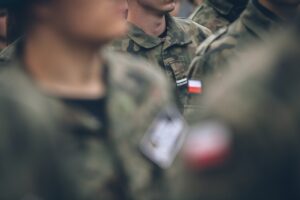Amping Up the Action: Air Rifles Taking Center Stage in Media Productions
Air rifles have long been popular among shooting enthusiasts and hunters, but their significance has transcended beyond these traditional domains. In recent years, these versatile weapons have made their way into the spotlight of media productions, capturing the attention of filmmakers, actors, and audiences alike. From action-packed movies to gripping television series, air rifles are becoming indispensable tools for creating thrilling on-screen experiences (See all about air rifles for more). In this article, we delve into the fascinating world of air rifles and explore how they are amping up the action in media productions.
Air Rifles: Not Just Child’s Play
Gone are the days when air rifles were considered mere toys. Today, these weapons have evolved to deliver impressive power, accuracy, and realism, making them a valuable asset in the realm of entertainment. With advancements in technology and manufacturing techniques, modern air rifles are capable of mimicking the look, feel, and even sound of their firearm counterparts. This realism adds a new level of authenticity to on-screen action sequences, without compromising safety or breaking the bank.
Versatility Meets Safety
One of the primary reasons behind the growing popularity of air rifles in media productions is their versatility. These firearms can be easily modified and adapted to suit various production requirements. From period dramas set in the 18th century to futuristic science fiction films, air rifles can seamlessly blend into any narrative setting. Additionally, air rifles offer a significantly safer alternative to traditional firearms, eliminating the risk of accidental discharge or injury on set. This safety aspect allows actors and production crews to focus on delivering stellar performances and capturing the perfect shot.
The Perfect Training Tool
Air rifles have become an invaluable asset in the training and preparation of actors for physically demanding roles. With their lower recoil and reduced noise levels, air rifles provide an ideal platform for actors to familiarize themselves with firearm handling techniques. This hands-on experience allows performers to develop a natural comfort and confidence when using weapons on camera. Moreover, air rifles enable actors to practice marksmanship skills without the associated costs and logistical challenges of using live ammunition.
Enhancing Action Sequences
Action-packed scenes require a certain level of intensity and realism to captivate audiences. Air rifles excel in this aspect, offering filmmakers a range of options to create visually compelling and thrilling sequences. From precision shooting to dynamic close-quarter combat, air rifles provide the versatility needed to choreograph intricate action scenes. The ability to control the velocity and trajectory of projectiles adds an extra layer of creativity for filmmakers, allowing them to push the boundaries of what is visually achievable on screen.
Breaking New Ground
The increasing utilization of air rifles in media productions is not only revolutionizing the way action is portrayed but also opening up new possibilities for storytelling. Filmmakers can now explore narratives that involve characters who rely on air rifles as their primary weapons, showcasing their unique features and advantages. By integrating air rifles into the fabric of the story, writers and directors can create fresh and engaging content that breaks away from conventional tropes.
The Future of Air Rifles in Media
As the entertainment industry continues to push boundaries and seek innovative approaches, air rifles are likely to play an even more prominent role in future media productions. Advancements in technology will further enhance the realism and performance of these firearms, blurring the line between air rifles and their firearm counterparts. Additionally, the ever-growing demand for safer and more cost-effective solutions will drive the adoption of air rifles as indispensable tools on sets worldwide.
Read also: Government: Why Online Reviews Are So Important
Conclusion
Air rifles have emerged as powerful assets in the realm of media productions, offering filmmakers and actors a safe, versatile, and cost-effective alternative to traditional firearms. Their ability to deliver realism, enhance action sequences, and contribute to character development has propelled them into the limelight of the entertainment industry. As we look ahead, the future seems promising for air rifles, with their potential to reshape the way action is portrayed and storytelling is approached. So, the next time you’re engrossed in an action-packed movie or a thrilling TV series, remember that behind the scenes, air rifles are taking center stage and amping up the excitement for audiences worldwide.




